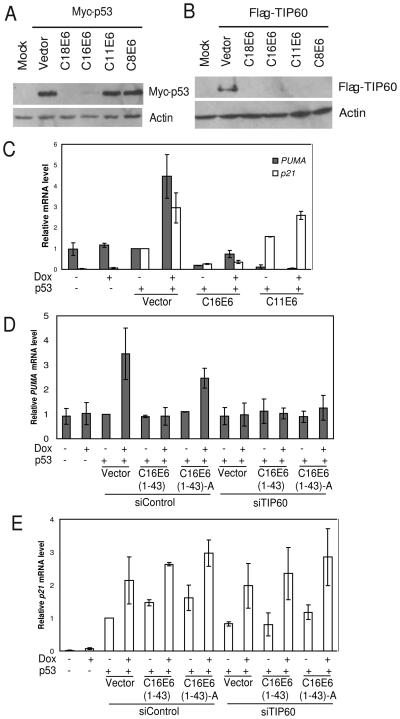Figure 7.
TIP60 is destabilized by both high- and low-risk HPV E6. (A) p53 is degraded only by high risk (HPV18 and 16) HPV E6. 293T were transfected with indicated plasmids and cells were harvested 48 hrs after transfection. Lysates were resolved on SDS-PAGE and probed for indicated antibodies. (B) TIP60 is degraded by both high- (HPV16 and HPV-18) and low-risk (HPV 11) HPV E6 and by the cutaneous HPV (HPV8) E6. Rest as in (A). (C) p53 dependent activation of the apoptotic gene PUMA is attenuated by low-risk HPV. H1299 cells were transfected with indicated plasmids and doxorubicin (5 μM) added 24 hrs after transfection. Cells were harvested 18 hrs post doxorubicin treatment. Relative mRNA levels of PUMA or p21 after normalizing to actin are shown: mean ± S.D. of two experiments. (D-E) TIP60 is required for p53-dependent expression of PUMA, but not p21, after DNA damage. Depletion of TIP60 using siRNA in H1299 cells abrogates induction of pro-apoptotic gene, PUMA. Rest as in (C).

